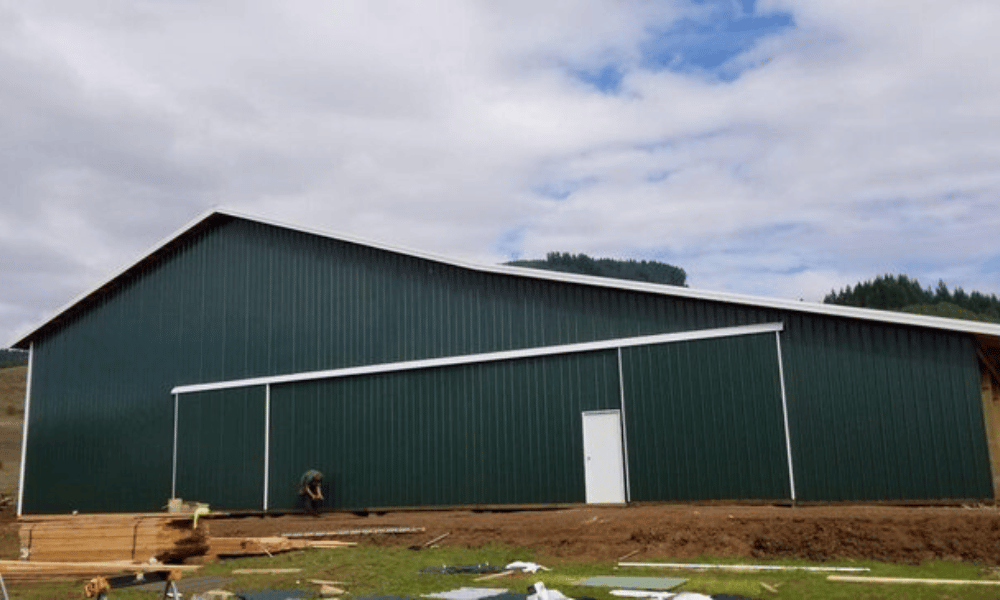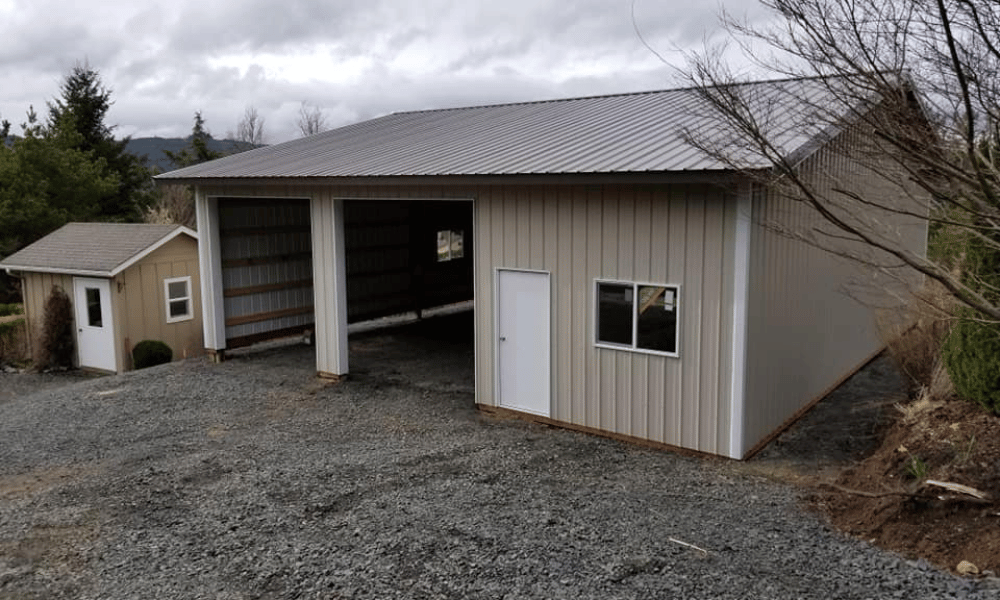Introduction
Building a pole building can be an excellent choice for farmers looking for efficient, cost-effective structures. These buildings are versatile and can serve various purposes—from equipment storage to livestock housing. However, before embarking on such a project, it’s crucial to understand the ins and outs of building code compliance. This article is designed to guide farmers through the maze of regulations and requirements associated with pole buildings, ensuring that your investment is not only sound but also compliant with local laws.
What Are Pole Buildings?
Pole buildings, often referred to as post-frame buildings, utilize vertical posts as their primary structural support. These poles are typically embedded in the ground or set on concrete footings. The walls and roof are then attached to these poles, creating a sturdy yet flexible structure that can withstand harsh weather conditions.

Benefits of Pole Buildings
- Cost-Effective: Generally, pole buildings require less material than traditional structures. Quick Construction: They can often be erected more quickly due to simpler construction techniques. Versatile Design: Suitable for various applications—agricultural, commercial, or residential.
Understanding Building Codes
What Are Building Codes?
Building codes are sets of regulations that govern the design and construction of buildings. These codes ensure safety, health, and general welfare for occupants and the public.
Why Are Building Codes Important?
Adhering to building codes ensures that your pole building will stand the test of time while safeguarding against potential hazards. Non-compliance can lead to fines, mandatory alterations, or even demolition.
Building Code Compliance: What Every Farmer Needs to Know About Pole Buildings
When constructing a pole barn or any structure on your property, understanding local building codes is paramount. Each jurisdiction has its own set of rules regarding materials used, structural integrity, fire safety measures, and environmental considerations.
Research Local Regulations
Before starting any construction project:

Common Building Code Considerations
https://www.deanlindseyconstruction.com/pole-barn-garages-and-workshops- Setback Requirements: How far your building must be from property lines. Height Restrictions: Limits on how tall your structure can be. Materials Used: Specific types of materials may be mandated based on fire safety standards or local climate conditions.
Types of Pole Buildings
Agricultural Pole Buildings
These structures often serve as barns or storage units for machinery and supplies.
Features:
- High ceilings for equipment clearance Large doors for easy access Ventilation systems for livestock comfort
Commercial Pole Buildings
Ideal for retail spaces or workshops.
Features:
- Additional electrical installations Office space integration Customer-friendly designs
Residential Pole Buildings
Increasingly popular as homes or guest houses.
Features:
- Customizable layouts Energy-efficient designs Aesthetic appeal through siding options
Essential Components of Pole Buildings
Foundation Requirements
A solid foundation is critical in ensuring stability and meeting code requirements. Depending on soil type:
Concrete Footings: Recommended in areas with unstable soil. Gravel Bases: Suitable for stable ground conditions but may require additional reinforcement.Structural Materials
The choice of materials impacts compliance:
Wooden Poles: Treated wood helps prevent rot. Steel Frames: Offers superior durability but may need special permits.Electrical Compliance in Pole Buildings
Understanding Electrical Codes
Electrical systems must adhere to the National Electrical Code (NEC), which dictates safe installation practices.
Key Areas Include:
Circuit Breakers Wiring Methods Grounding TechniquesHiring Licensed Electricians
Always engage licensed professionals for electrical work to avoid violations and ensure safety standards are met.
Roof Design Compliance
Roof Load Considerations
Understanding snow load requirements is crucial in designing roofs that comply with local codes:
Consult historical data on snow loads in your area. Ensure roofing materials meet strength specifications.Ventilation Needs
Proper ventilation reduces moisture buildup and maintains air quality:
Ridge vents Soffit ventilation systemsInsulation Requirements
Insulation plays a significant role in energy efficiency and temperature control within pole buildings:
Check R-value requirements based on climate zones. Understand moisture barriers' importance in preventing mold growth.Fire Safety Regulations
Fire Codes Overview
Different jurisdictions have specific fire safety standards that apply to all buildings:
Fire-resistant materials Sprinkler systems Emergency exitsCreating Safe Spaces
Ensure pathways are clear and accessible in case of emergencies by following designated egress routes outlined by local codes.
Environmental Considerations
Building codes increasingly incorporate environmental protections:
Stormwater management strategies Sustainable material uses Habitat preservation effortsAlways consult environmental guidelines when planning your construction project!
Cost Implications of Compliance
While compliance may seem daunting initially, non-compliance could lead to hefty fines down the road! Understanding potential costs upfront can guide budgeting effectively:
| Item | Estimated Cost | |--------------------------|-------------------| | Permits | $100 - $1000 | | Inspections | $75 - $500 each | | Materials | Variable | | Labor | Varies widely |
Note: Always check current rates as they fluctuate based on market conditions!
FAQs About Building Code Compliance for Pole Buildings
1) Do I need a permit for my pole building?
Yes! Most jurisdictions require permits before you start any construction project—check with local authorities first!
2) What happens if I don’t comply with building codes?
Non-compliance may result in fines, mandatory changes, or even demolition orders depending on severity!

3) Can I build a pole barn myself?
It’s possible! However, ensure you’re knowledgeable about structural integrity and compliant practices; consulting professionals is advisable!
4) How long does it take to obtain a permit?
The timeline varies widely based on location—expect anywhere from several days up to months!
5) Are there specific builders who specialize in pole buildings?
Yes! Some contractors specialize solely in this type of construction; research thoroughly before hiring anyone!
6) Is there financial assistance available for complying with building codes?
Some grants exist aimed at agricultural development—check with local agricultural departments for options!
Conclusion
Navigating the complexities of “Building Code Compliance: What Every Farmer Needs to Know About Pole Buildings” might seem overwhelming at first glance; however, being informed will save you both time and money down the line! By staying proactive about regulations—from zoning laws through fire safety—you’ll create not just a functional structure but also one proudly standing within legal bounds! Remember always to consult professionals whenever uncertainty arises—they're invaluable resources throughout this process!